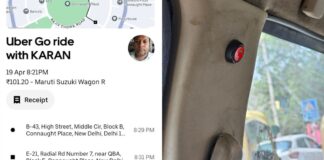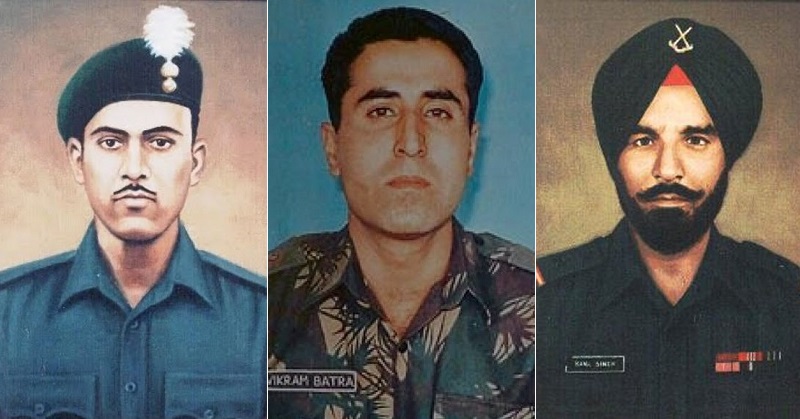
We all take immense pride and honor in our Armed Forces, which truly portrays the spirit of dedication, patriotism and sacrifice. Believing only in one religion – ‘Service Towards Nation’, our brave soldiers bear freezing temperatures and scorching heat to keep our borders safe from the enemy. Away from their own loved ones, they give us all, the occasion, to be with ours. They make the supreme sacrifice without thinking twice, but how many of us know their names, let alone know what they went through.
The annals of Indian Armed Forces is replete with innumerable sagas of valor.
ADVERTISEMENT
Here are 10 such legendary tales of unbelievable courage and guts, which will make us feel extremely proud and also make us believe that ‘Nation Comes Before Anything’:
1. Major Somnath Sharma, PVC (31 January 1923 – 3 November 1947)
Born in Kangra, Himachal Pradesh, his father Amar Nath Sharma too was a military officer. He graduated from the Royal Military College in 1942 and was commissioned into the 8th Battalion of 19 Hyderabad Regiment of the British Indian Army (which later became 4th Battalion of the Kumaon Regiment of the Indian Army). On October 31, 1947 Major Sharma’s Battalion was airlifted to Srinagar to repeal the Pakistani invasion in Kashmir Valley. Even though he had a fractured left hand, he insisted on going with his company. On November 3, Sharma’s company was attacked by a tribal lashkar of 700 raiders. His company was surrounded from three sides and there was heavy mortar bombardment. He realized that if they abandoned their position, Srinagar city and the airport would be vulnerable. Outnumbered by a ratio of seven to one, Major Sharma encouraged his troops to fight gallantly by running from post to post, often exposing himself to the enemy. With rising casualties adversely affecting his company’s firepower, he himself started distributing ammunitions to his men who were firing from light machine guns. While he was fighting the enemy, a mortar shell exploded on a pile of ammunition near him. He succumbed to his injuries, but before that he transmitted this message to the brigade headquarters :
“The enemies are only 50 yards from us. We are heavily outnumbered. We are under devastating fire. I shall not withdraw an inch but will fight to our last man and our last round.”
By the time the backup forces arrived, his position had been overrun by the enemy. However 200 infiltrators had been killed by his company, which made them lose momentum to advance, and gave Indian Army the crucial time to block all routes to Srinagar and save the city from falling. Major Somnath Sharma was the first recipient of the Param Vir Chakra in Indian Army.
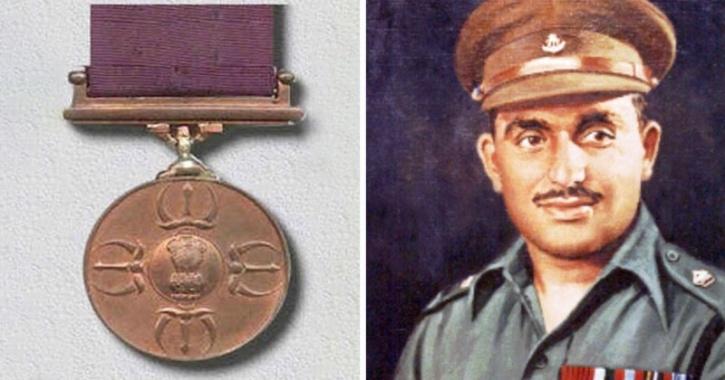
2. Company Quartermaster Havildar Abdul Hamid, PVC (01 July 1933 –10 September 1965)
Abdul Hamid was born in a poor Muslim family in the Dhampur village of district Ghazipur, in the erstwhile United Provinces (now Uttar Pradesh). He joined the Indian Army in 1955 and was posted to the 4th Battalion of The Grenadiers Regiment. He had seen action in the 1962 Sino-Indian war as part of the 7th Infantry Brigade. However, it was in the 1965 war with Pakistan, that this son of India proved his mettle to the world. On 8th September 1965, Pakistan sent its platoon of tanks to the Indian town of Khem Karan. That move resulted in what came to be known as ‘Battle of Asal Uttar’. It is described as the largest tank battles in the history since the ‘Battle of Kursk’ in World War II. Abdul Hamid just had a vehicle mounted Recoilless Rifle (RCLR) against the mighty enemy tanks. When the enemy tank formations came closer, he moved out of the flank with his gun mounted jeep and by the end of the day he had destroyed 2 tanks and four were abandoned by the enemy. Two days later, on September 10, Hamid spotted six Pakistani tanks heading towards his men. He used tall crops in the field to camouflage his jeep and shot the Pakistani tanks down, one after another. Undeterred by the heavy machine gun and high explosive fire, Hamid was able to knock out three enemy tanks. By this time, the Pakistani tanks spotted his jeep and brought it under heavy fire. As he hit another enemy tank, he was mortally wounded by a high explosive shell. His unparalleled bravery and determination inspired his battalion to put up a gallant fight and defeat the enemy. What Abdul Hamid achieved is a never-heard-before war feat. For his dogged determination and raw courage in the battle, he was awarded the Param Cir Chakra, posthumously.
ADVERTISEMENT
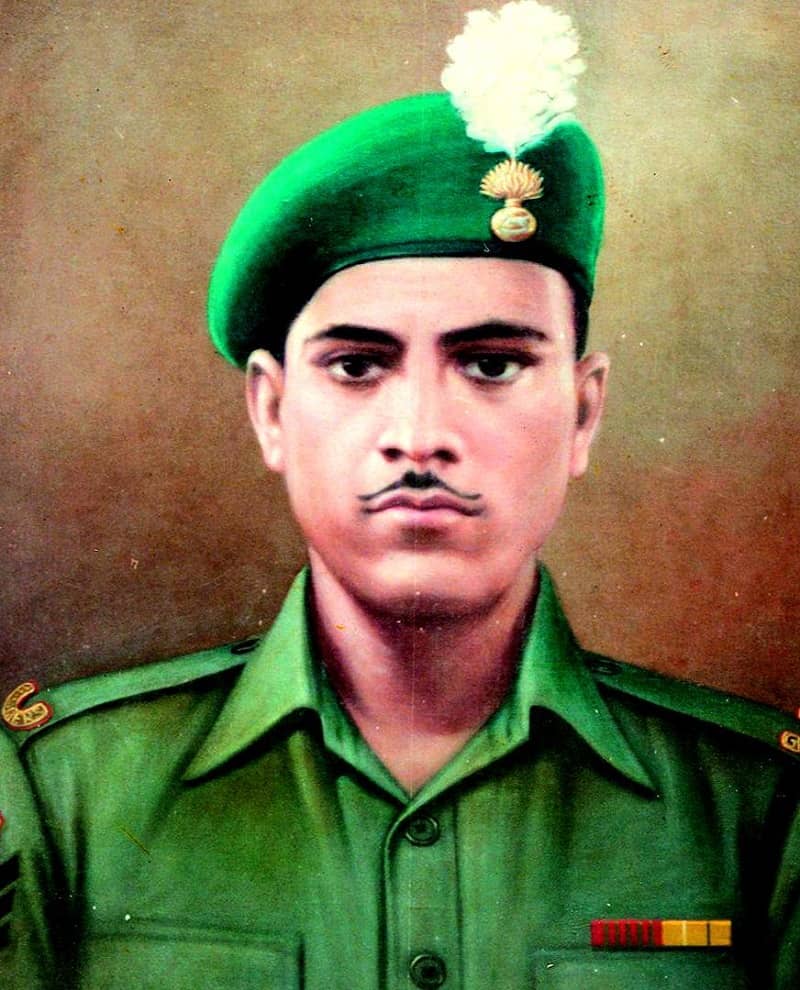
3. Captain Vikram Batra, PVC (09 September 1974 – 07 July 1999)
Born in a small town of Palampur, Himachal Pradesh, Vikram was older to his twin brother by fourteen minutes. Brilliant in studies and sports, Vikram got commissioned as a Lieutenant in 13 battalion of J&K Rifles in 1997. A Hero of the Kargil war, he led one of the toughest operations in India’s mountain warfare history and was instrumental in recapturing Peak 5140 at an altitude of 17,000 feet. He got badly injured but still managed to kill 3 enemy soldiers at close quarters. Pakistani army’s intercepted wireless messages referred to him as “Sher Shah” (Lion King). His slogan of “Yeh Dil Maange More” became well known throughout India. He then went on another tough mission to capture Peak 4875, at a height of 16,000 feet. Launching a fierce assault Capt. Batra killed 5 enemy soldiers in close combat. One of his men got shot in the fight and he set out to save him. When a Subedar tried to help, he pushed him to a safer side and told him “you have a family, I am not even married”. He saved his fellow soldier, but attained martyrdom while doing so. He actually proved his earlier quote correct when he had said :
“Either I will come back after hoisting the Tricolour or I will come back wrapped in it, but I will be back for sure.”
For his exceptional bravery and valor, Captain Vikram Batra was awarded the Param Vir Chakra, posthumously.
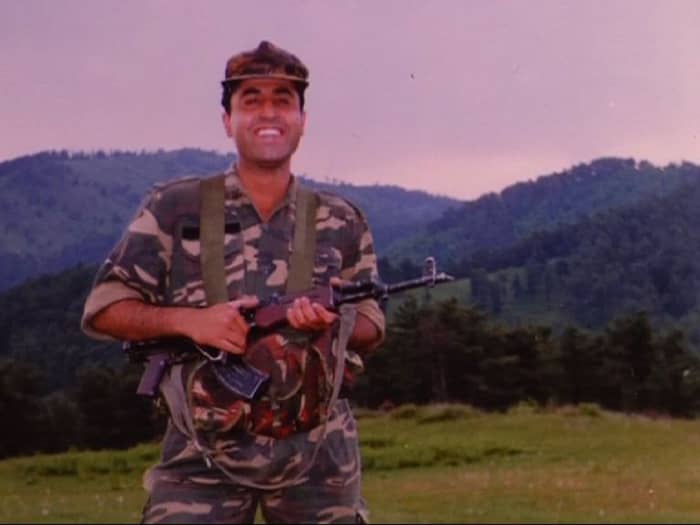
4. Subedar Major Yogendra Singh Yadav, PVC (10 May 1980 – )
Yogendra Yadav was born in Aurganabad Ahir village, District Bulandshahr, Uttar Pradesh. His father, Karan Singh Yadav was in the Kumaon Regiment and had participated in the 1965 and 1971 wars. Yogendra joined the Indian Army at a young age of 16 years and was enlisted with the 18 Grenadiers. He was in service for only two and half years when his commando platoon ‘Ghatak’ was given the responsibility to capture three strategic bunkers on Tiger Hill at a height of 16500 feet. It was a back-breaking, 90 degree climb to 1000 feet high cliff face. Yadav volunteered to lead the assault with a seven member group, fully knowing that they were going to die, but determined to inflict maximum damage to the enemy. While he was climbing the cliff, there was heavy fire from the enemy bunker and he got hit by three bullets on his shoulder and leg. Despite his injury, he kept climbing and reached the top of the cliff. In immense pain, he crawled to the bunker and lobbed a grenade, killing four Pakistani soldiers. Yadav took 14 bullets during his daring attack, but he continued his fight and destroyed the second bunker too. He took hold of a rifle and began firing at the enemy, while shifting his position. This created panic among the Pakistani soldiers who assumed Indian reinforcement had come and they fled. By the time Indian backup arrived, he had already neutralized the enemy and Tiger Hill was reclaimed by Indian Army. Yogendra Yadav gained consciousness after three days at a hospital in Srinagar. At an age of just 19 years, he became the youngest recipient of Param Vir Chakra. Yadav’s heroic actions were portrayed in the film ‘Lakshya’ by actor Hrithik Roshan.
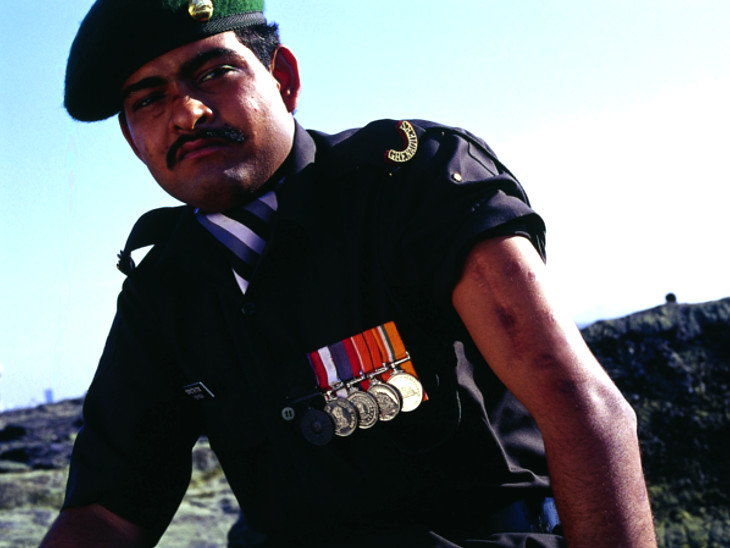
5. Rifleman Jaswant Singh Rawat, MVC (19 August 1941 – 17 November 1962)
Symbol of extraordinary bravery, Rifleman Jaswant Singh Rawat is a legend in the Indian Army. During the Indo-China war in 1962, Jaswant Singh was serving in the 4th battalion of Garhwal Rifles. At the ‘Battle of Nuranang’, soldiers were ordered to vacate their posts due to heavy causalities, but Jaswant Singh Rawat did not leave his position and continued to fight back the Chinese. Fighting with great courage and intelligence, Jaswant set up weapons at different positions and was helped by two Monpa tribal girls named Sela and Nura. Maintaining a heavy volume of fire, they successfully managed to fool the Chinese that they were facing a huge battalion. This went on for three long days, until the Chinese found out about the setup after capturing the man who supplied ration to Jaswant. Knowing he would be taken prisoner by the Chinese, Jaswant shot himself. Sela died in grenade blast while Nura was captured. When the Chinese learned that they were fighting single solider all this while, they became so furious that they cut off Rawat’s head and carried it back to China. However, after the ceasefire, impressed by Rawat’s bravery, the Chinese commander returned the head along with a brass bust of Jaswant Singh. The bust has been installed at the war site which has been renamed as ‘Jaswant Garh’. He was awarded the Maha Vir Chakra posthumously. He is the only soldier in Indian Army who has risen through the ranks after his death and was promoted to the rank of a Major General after 40 years of service.
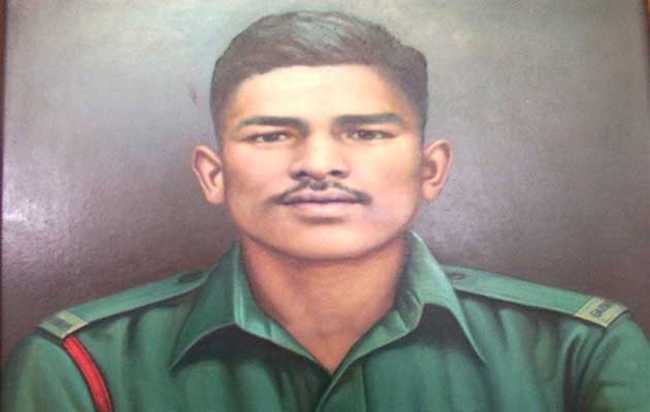
6. Second Lieutenant Arun Khetarpal, PVC (14 October 1950 – 16 December 1971)
Born in Pune in a family with long military history, Arun Khetarpal excelled in studies and sports. He joined the NDA in June 1967 and then the Indian Military Academy. In June 1971 he was commissioned into the 17th Poona Horse. During the 1971 Indo Pak war, 17 Poona Horse was placed under the command of 47th Infantry Brigade and ordered to construct a bridge across the Basantar river near the International Border. On December 16 1971, Indian Army tanks crossed the bridge, where they encountered a heavily armoured Pakistani regiment. Indian troops were out numbered and the Commander of the squadron requested assistance. Arun Khetarpal who was stationed close by with his Centurion Tank troop, responded promptly and launched a counter attack, overrunning their defences with his tanks. However, the commander of the second tank was killed in the attack, leaving Arun alone in charge of the troops, who continued his attacks on enemy stronghold. He did not abandon his tank, even after getting seriously injured in the battle. His final words over the radio to his superior officer were:
“No Sir, I will not abandon my tank. My gun is still working and I will get these Bastards”.
With just two remaining tanks under his command, Arun Khetarpal destroyed 10 Pakistani tanks before this courageous officer attained martyrdom. For his brave and selfless action, he was awarded the Param Vir Chakra, posthumously.
ADVERTISEMENT
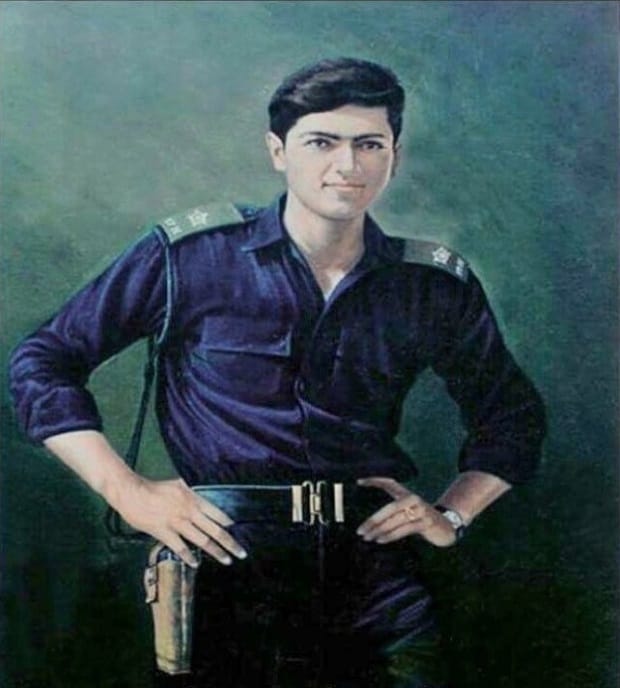
7. Naik Jadunath Singh, PVC (21 November 1916 – 6 February 1948)
Singh was born in poor farmer family in Khajuri village of Shahjahnpur, Uttar Pradesh. While growing up he worked in the fields and also became the wrestling champion of his village. He was enlisted in the 7th Rajput Regiment of the British Indian Army during the Second World War. He saw action in Burma and Andaman and Nicobar Islands against the Japanese. In October 1947 his Regiment was ordered to secure Naushera town in Rajouri district, following an offensive by the Pakistani raiders in Jammu and Kashmir. Singh was in command of nine personnel, manning the forward post, which bore the brunt of the enemy attack, waves after waves. But Singh displayed superb leadership qualities and used his small force so effectively that the enemy retired in utter confusion.
When all his men, including himself, were wounded, he personally took over the Bren gun (Light Machine Gun) and encouraged his troops to fight and turned a near defeat into victory with the enemy retreating again. By this time all men in the post were casualties. In the third and final enemy attack, in spite of being critically wounded, Singh made a determined single handed charge with a Sten gun and took the enemy by surprise, creating a flutter among them. However, the brave solider met his gallant end when two bullets hit him on the chest and head. His gritty resistance proved crucial in the ‘Battle of Naushera’ as the reinforcement company was able to recapture the posts. For his exemplary heroic actions, Naik Jadunath Singh was awarded the Param Vir Chakra, posthumously.
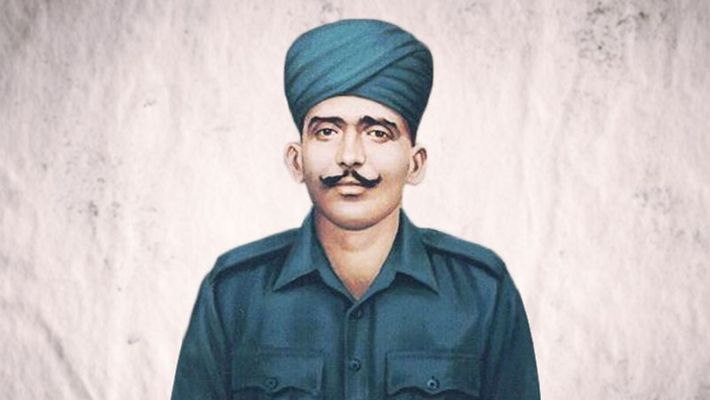
8. Subedar & Honorary Capt. Karam Singh PVC, MM (15 September 1915–20 January 1993)
Karam Singh was born in the village of Sehna in Barnal District of Punjab. Though his father was a farmer, Karam Singh decided to join the army, being inspired by the heroic stories of his village’s veterans in World War I. He joined the 1st Battalion of the Sikh Regiment in 1941. For his courageous conduct in the ‘Battle of Admin Box’, during the Burma Campaign, he was awarded the Military Medal by the British. On October 13, 1948, Pakistan launched a massive attack to capture Richhmar Gali in Kashmir. Karam Singh was commanding 1 Sikh at a forward post. Being outnumbered ten-to-one by the Pakistani troops, the Sikhs repelled the attack multiple times.
With heavy firing destroying almost all India bunkers and cutting off the communication, Karam Singh decided to fight the enemy with whatever arms and army he was left with. Despite being severely wounded, he rescued two injured men and kept boosting the morale of his troops by moving from position to position and throwing grenades. Even with grave injuries and the enemy very near to him, he refused to evacuate from his forward position. In fact, he jumped out of his trench and stabbed two intruders to death, greatly demoralising the enemy. Every successive Pakistani attack was repelled by Singh and his men. Finally, the Pakistani troops retreated, unable to capture the post. Karam Singh became the first living recipient of the Param Vir Chakra. He was one of the five soldiers selected by then Prime Minister Jawaharlal Nehru to raise the Indian flag for the first time after independence in 1947.
ADVERTISEMENT
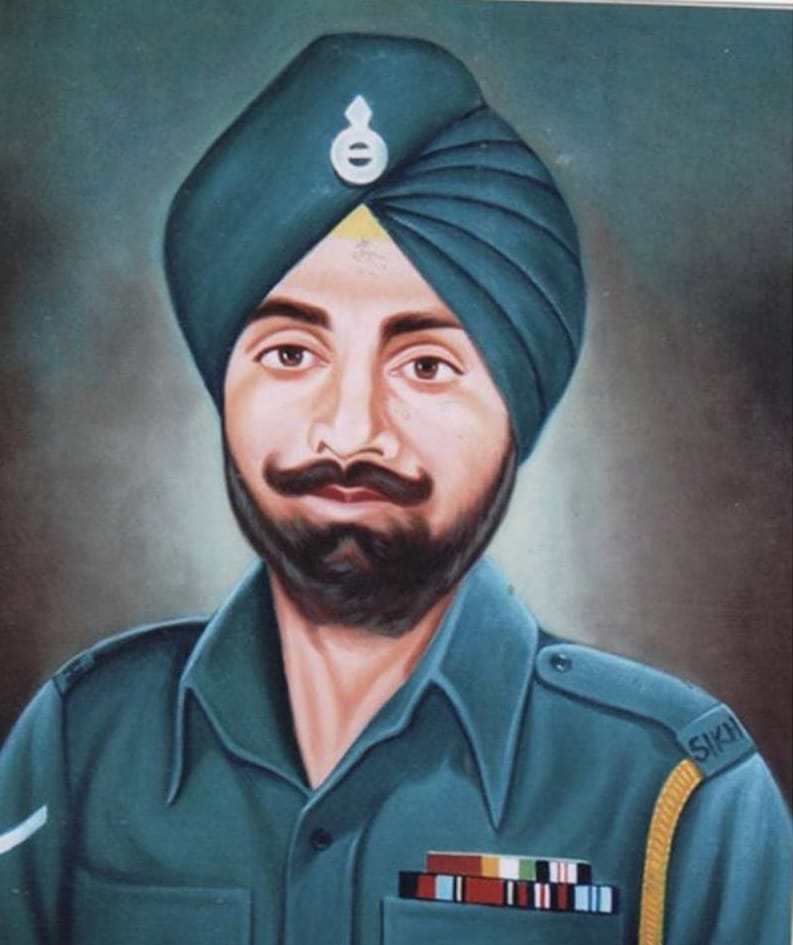
9. Flying Officer Nirmal Jit Singh Sekhon, PVC (17 July 1943 – 14 December 1971)
Hailing from the village of Isewal in Ludhiana, Punjab, Nirmal Jit always looked up to his father (who served as a Warrant Officer in the Indian Air Force) and decided that he would join the Indian Air Force. He fulfilled his dream when he was commissioned into the Air Force as a Pilot Officer on June 4, 1967. During the Indo-Pakistan war of 1971, Sekhon was part of the famed 18th Squadron, called the ‘Flying Bullets’ for its incredible air manoeuvring abilities. The Squadron was charged with the air defence of Srinagar.
In the morning of December 14, 1971, six F-86 Sabre jets of the Pakistan Air Force (PAF’s flagship fighters) entered the Indian territory undetected, under thick foggy conditions and started bombing the runways, causing extensive damage. Sekhon immediately rolled for take off as No. 2 in a two-Gnat formation, with Flight Lieutenant Ghuman in the lead. However, Ghuman (known as ‘G Man’ to his colleagues) lost visual of Sekhon, and could not take part in what is termed as one of the most fierce and deadly dogfights in the history of air warfare. Nirmal Jit Singh took on four Sabres, with two in front and the other two chasing him. Sekhon brought down one Sabre by scoring a direct hit. He set another one ablaze, with trailing smoke. The odds were still against him, even though he had downed two of the enemy planes single-handedly. Finally one of the Sabres chasing him (Piloted by Flt. Lt. Salim Mirza of PAF) managed to hit his Gnat with a volley of six machine guns. With its flight control system and ejection system knocked out, Sekhon’s last transmission was “I think I am hit. G-Man, come and get them!”. Flying Officer Nirmal Jit Singh Sekhon laid down his life, while protecting his motherland. Even Flt. Lt. Salim Baig Mirza, who shot down Sekhon’s Gnat, later went on to praise the courage Sekhon had displayed against all odds. For his utmost bravery and sacrifice, Sekhon was awarded the Param Vir Chakra, posthumously. Flying Officer Nirmal Jit Singh Sekhon is the only warrior of the Indian Air Force to be awarded India’s highest wartime gallantry award.
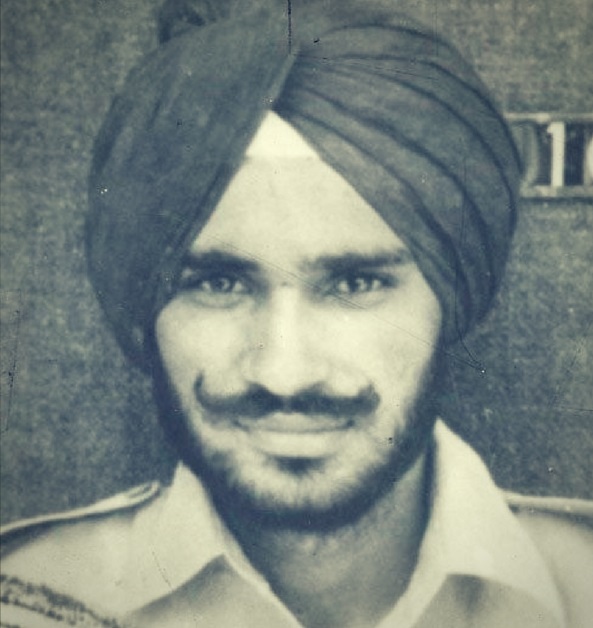
10. Subedar Major and Honorary Capt. Bana Singh, PVC (6 January 1949 – )
Bana Singh was born in a Sikh family in Kadyal, Jammu & Kashmir. He joined the Indian Army on Jan 6, 1969, and was enrolled in the 8th Battalion of J&K Light Infantry (JAK LI). In 1987, Pakistan carried a stealthy intrusion and established an important post at the highest peak in the Siachen Glacier. They named it ‘Quaid Post’ (from Quaid-e-Azam, the title of Muhammad Ali Jinnah). On May 29, 1987 a reconnaissance patrol of the 8 JAK LI battalion, led by young Second-Lieutenant Rajiv Pande, was gunned down by the Pakistanis, killing nine soldiers, while three survived. After a month of preparation, Indian Army launched ‘Operation Rajiv’, in the honour of 2nd Lt. Rajiv Pande, with an objective to recapture the impregnable glacier fortress of Quaid post (at an altitude of 21000 feet) and avenge the attack on the recon patrol.
Led by Major Varinder Singh, the unit launched many attacks but were not successful. It was then that Naib Subedar Bana Singh led a team of 5 valiant soldiers and climbed a steep 457 metres high wall of ice, braving out a blizzard. Launching a brilliant and unexpected attack on the Pakistanis, Bana Singh and his troops charged towards them with ferocity. Singh threw a hand grenade into the bunker and closed the door, killing all those inside. Getting involved in a hand-to-hand combat, the Indian soldiers bayoneted some Pakistani soldiers outside their bunkers while some fell to their deaths. After an intense battle, the men with the do-or-die ferocity, cleared the post of all the infiltrators.
ADVERTISEMENT
On June 26, 1987 the Indian Flag flew high at the Quaid post, which was renamed as “Bana Top”, in honour of Bana Singh. For his conspicuous bravery and leadership under the most adverse conditions, Bana Singh was awarded the Param Vir Chakra. He is the only soldier (along with Major Ramaswamy Parmeswaram, PVC, posthumous) to get this honour in peace time (PVC is given for exemplary valour in war times). At the time of Kargil war, he was the only PVC awardee to be still serving in the Indian Army. He retired from the Army on 31 October, 2000.
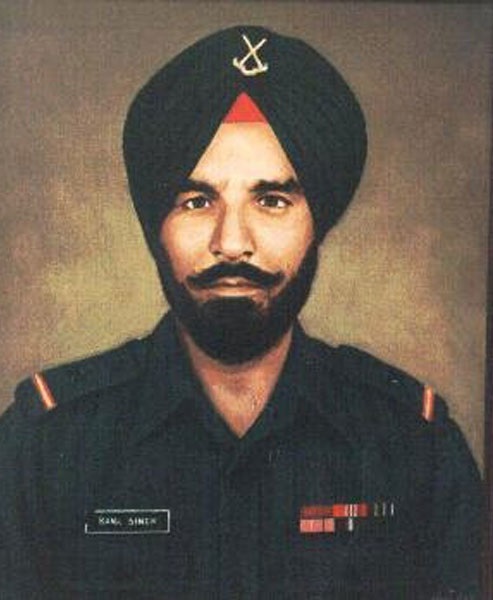
What is a lifetime of adventure for us, is a daily routine for them. As the famous quote goes “The true soldier fights not because he hates what is in front of him, but because he loves what is behind him”. Let’s all take a solemn pledge, that we will always remember the sacrifices of our soldiers and give them the highest respect they deserve…JAI HIND!
ADVERTISEMENT











